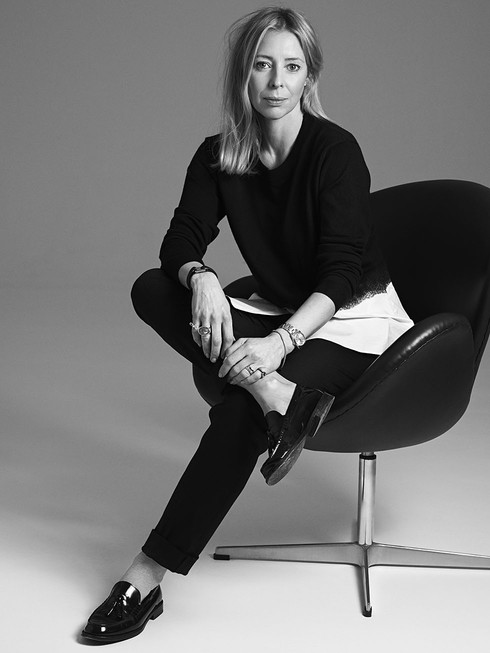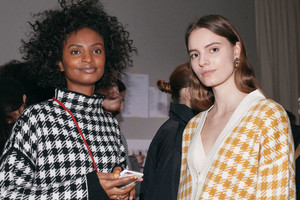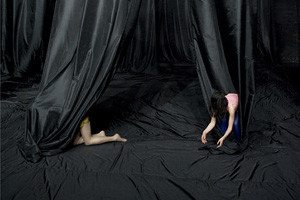A Discussion with Kristina Tjäder of House of Dagmar about Ethical and Sustainable
Written by Rocío Garrido Rus by Stephanie CetinaIt is hard to believe that at the point in time we are at, sustainable fashion is not a more comfortable topic to deal with. Not that there hasn’t been a change: brands are speaking out about it more and more every day. It seems that the more it is spoken about, the less one seems to be able to believe in such a contradictory concept. To make fashion more environmentally friendly is a challenge, and it is necessary to know what it is that one can do. An article or event on sustainability and fashion is still not as attractive as the launch of a new and unnecessary product. There is a need to talk about this more, because there’s a lot of work to be done still.
Swedish fashion is one of the voices that need to be heard when it comes to this global conversation. We spoke to Kristina Tjäder, Founder and Creative Director at House of Dagmar, about her approach to sustainable fashion, the steps small, yet firm steps Dagmar is taking, and other miscellanea that a conversation on sustainable living has brought up.
Who is the House of Dagmar woman? How do you relate to her?
The House of Dagmar woman is sensual, sophisticated and progressive. She combines her private and work life with her personal interests in a successful way.
How does sustainability relate to House of Dagmar?
Sustainability has been one of our ground pillars since we’ve started our brand, we want to leave as few traces as possible on the environment and do our best to help saving our planet.
Does House of Dagmar have a sustainability plan it follows? Could you elaborate?
Yes, we do have a plan. First, we are always improving the environmental performance across our supply chain. Secondly, we have a progressive take on sustainability and always search for new and more sustainable ways to produce. Thirdly, we want to inspire our customers and their consumption behaviours. Lastly, we strive to create traceability across the supply chain.
There are many different ways to approach sustainability in fashion: design, production, reusing and recycling are just some of them. How does Dagmar relate to each one of these?
In terms of design, timelessness is a key word. Most of our producers today have closed systems where they handle and recycle all waste, as well as finding ways of using as little energy as possible. We are continuously searching for recycled, organic and sustainable qualities and aim to find new and better solutions.
How do you think sustainable approaches to fashion have evolved recently?
There are more discussions today than a few years ago, however there are unfortunately still too few alternatives. The fashion brands must push their suppliers to develop more sustainable ways of production.
Even if innovative and sustainable materials are always attractive to the fashion industry, they’re not as explored as more traditional materials like cotton or wool – proved to have a greater cost for the environment. In what ways does Dagmar experience with them?
When using traditional materials, our aim is to make products that are timeless, both in design and in quality. The amount of clothes that become trash today is enormous. We would rather have people pass items they don’t want any longer to someone else, instead of throwing them away. We are using alternatives to traditional materials, such as a fabric made of recycled PET bottles or recycled cashmere.
What is the biggest challenge for a fashion brand these days, in terms of sustainability?
It is still difficult to be able to control the whole chain as well as finding good sustainable qualities that can also last for a long time.
How does sustainability affect the design process of a garment? Is it just a matter of fabrics, or rather a production issue, or both?
It is definitely a matter for both design and production. In terms of production, we have to collaborate and to have a progressive mindset since the traditional ways are usually cheaper and easier for the suppliers.
How do you manage to offer products made of animal materials but still label them as sustainable?
We are trying to find alternative ways, such as the 100% animal friendly mohair fur that we have in the Fall 2016 collection. We have also made the statement of using only leather and fur products that are part of of animals that we eat.
Do you think that the fashion industry is ready to cut off the use of leather?
No, I don’t think so, since there are no really good alternatives yet. But I am very interested in following the development of meat and leather made in laboratories.
What is, in your opinion, a reference to you in terms of sustainable fashion brand?
There are different levels of sustainability and it’s up to each brand to say how sustainable they should be. The most important thing is to set up a goal and to work your way up towards that goal. It’s better to start from a low level that not doing anything at all. Being 100% sustainable would be very difficult today, but hopefully all of us will be in the future.
In a fashion system – and a society – so inherently linked to timing and abundance, would you agree that producing less garments and collections would be one of the most effective ways of being sustainable?
Yes, I do. My philosophy is to rather buy a few really good products that plenty not so good.
What’s the role of consumers when it comes to the impact of fashion consumption?
In general people don’t ask for sustainability so much yet. However, I think that will change. So many of us already only eat organic food, for example. I think this greener approach will affect everything we do.
Do you think that fashion brands are ready to produce less “needs”?
I think that each brand needs to find their unique offer and focus on that. We also have a responsibility to make sure that we leave as few traces as possible on our earth.
Do you think that there is an urgent need for a change of mindset when it comes to consumers and brands, regarding sustainable production and consumption?
Yes I do. We need to be out there and educate the consumers and to inform them that they can make a change by doing the right choice.
What’s your opinion on the common phrase “sustainability is just a trend”?
It is a very good trend that we should really stick to and develop in new and inspiring ways.
What is your hope for the future, in terms of sustainability?
My hope is that there will be a bigger request and awareness from both the end consumers and the suppliers. Today we need to search very, very hard even to find nice sustainable qualities that can make a good alternative to the traditional.
What do you think is the biggest step forward that House of Dagmar has taken in order to be more sustainable?
So far we have produced recycled, organic and sustainable products, we will continue to increase the amount of these types and will communicate this to our customers.
What would be a dream “sustainable scenario” in the fashion business to you?
My dream scenario is that people will care as much for what they buy as for what they eat.













